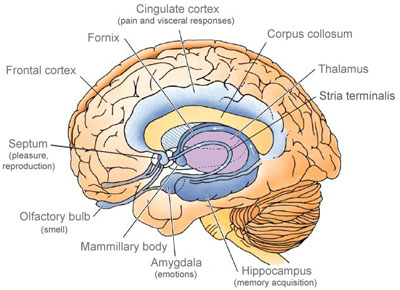
Stronger Muscles Mean Better Brains?
Brain health and cognitive function has become a large area of study in health science. Psychology has interest in brain anatomy and neuroscience to fully investigate the attributes of the human mind. Recently studies have been investigating the connection between exercise and mental performance. Psychology Today poses the question does a stronger and fitter body correlate to a better brain. This is a fascinating question and it makes many in various sciences related to the human body. The common stereotype is that jocks and jockettes are not the most intellectually inclined. Stereotypes do not reflect reality, however. Psychology and neuroscience have not even determined a specific definition of intelligence. Rigorous debates have been conducted about its attributes and characteristics. Controversy surrounds academic investigation due to the connection with eugenics and pseudopsychology. The hereditarian theory of IQ does not have a scientific proof to support its claims, but it is still accepted by small circles. While incorrect theories can be discredited, serious investigation must continue. The importance of brain health must be a priority. As the world population ages dementia and Alzheimer’s disease become a bigger threat to public health. Exercise can improve health for multiple organ systems. The brain can also benefit in relation to a healthy circulatory system. Yet, one must question the results of research and scientific studies.
Gretchen Reynolds wrote about a study by Claire Steves, which involved British twins. She writes many pieces related to health science and exercise physiology for the New York Times. Twin study has been used in both psychology, sociology, and genetics to understand the influence of environment . She claims that there is a correlation between muscular health and mental acuity. The data was extracted from the TwinUK registry. It was composed by both non-identical and identical twins. The reason it was composed of both was to not have genetically inherited diseases effect the data. This could not be eliminated completely seeing as there may not be complete family trees of all the twins registered. Gretchen Reynolds even states ” these studies have limitations and one of them is that some people may be luckier than others.” She delineates further : “they may have been born to have a more robust brain than someone else.” Just like some people are born to be taller or stronger, our neurological attributes differ. This explanation is not completely genetic. A combination of genes and environment can change health outcomes : ” their genes and early home environment also might have influenced those exercise habits, as well as how their bodies and brains responded to exercise.” A general summery of this would be genes and the changes in environment can confound results of an experiment.



Scientists in various fields have the tendency to emphasize genes or environment, when it is a combination of both. Twins show that there is an interactionist theory between environment and genes . If twins share the same home and genes, this makes it easier to observe changes. When a divergence happens then there is indication lifestyle and habits are influencing health. What Claire Steves of King’s College London did was to study the thighs of the twins. The muscles of the legs are the biggest in the body. Strong legs means better mobility, especially in old age. The study found that that it appeared as if the people with stronger legs were sharper. The subjects for the study were 162 middle aged women who were twin pairs. Some were either identical twins or not. Scientists also sought subjects who had done computerized examinations( ten years previous ) that tested memory and problem solving skills. Metabolic health and leg strength was also examined . Exercise habits were not included mainly because it would not give an exact measure of strength. Unreliable data of the frequency of exercise regimens would have altered results. However, it was noticed that subjects who did report more exercise had stronger legs. The cognitive tests were repeated and subjects were given brain scans.



What was then done required to comparing leg power with the present and ten years in the past. According to the study, the women with the sturdiest legs of the 324 had the least decline in thinking skills. A difference was noticed in twin pairs that the stronger one was the better thinker later according to the cognitive tests ( also related to memory) . The performance difference was 18% compared to the weaker twin. The brain imaging of identical twins also revealed that the twin with the stronger legs had more brain volume. Gretchen Reynolds stated ” over all, among both the identical and fraternal twins, fitter legs were strongly linked, 10 years later, to fitter brains.” There are some problems with this study. The sample only included middle aged female twins. Men were not included in the experiment. It would be fascinating to see if the results would be similar based on sex. If men’s body composition is mostly muscle then the males twins should outperform the stronger female twins in the cognitive tests. Another issue was that it did not take into consideration the changes in health condition of the muscular system. It really does show the effect of exercise on the brain. As far as one can tell, building muscle power does not build brain power.
It is doubtful that the man with the violin would be able to reach the level of mathematical skill as Maryam Mirzakhani. The results may be different if tested with professional athletes.
A person who does not think critical about the information may reach the wrong conclusion. One could easily conclude from the study that men would have the better brains, due to more muscle mass. While both men and women are closer to one another in the lower body, women have an estimated 33% less compared to a man. However, it is a myth to say that men have better brains or are more intelligent than women. A more through study would examine the changes across age groups. What is extrapolated from this experiment is that there may be some biochemicals that are released from exercise. This may offer protection at the cellular level. A more complex physiological process is occurring, but more research is needed to explain why.
Psychology has never agreed to a single definition of intelligence. Numerous theories have been proposed, yet there remains a glaring problem. Intelligence is not measurable. IQ and psychologists that support them claim that they are accurate. This is an example of reification. Meaning taking a concept that is not measurable and quantifying it. The field of physics measures through scalars and vectors. Personality tests are even questionable. If answers are not given honestly on such a test, it would be difficult to determine someone’s temperament. IQ test do not measure brilliance or genetic ability. The only indications it gives is proficiency in puzzles or a hint at education levels. It seems more like it only shows how well a person can take a test. Mismeasure of Man describes how eugenicists, biologists, psychologists, naturalists, anthropologists, and supporters of scientific racism used data and statistics as a means to prove the inferiority of various ethnic groups. It began with racial classification in physical anthropology when Johann Blumenbach stated there were five distinct races . There were Caucasians, Mongolians, Malayans, Ethiopians, and American Indians. It was not accepted that different races of people belonged to the same species. The classification was based on the measurement of skulls and skin color. Craniology was used to determine intelligence and human worth. Paul Broca became the biggest advocate of this pseudoscience in the 19th century. Known for the exploration into the the localization of brain function, he applied crainology in an attempt to prove other races were inferior to Europeans. When craniology was no longer credible, IQ testing took its place. Alfred Binet the original developer of the IQ test never made it to be used for discrimination. It was designed to in his nation of France to identify children who were struggling in school for special education. The concept of IQ was really developed by William Stern. The German psychologist even coined the term intelligence quotient.

IQ tests are still used by psychologists, even though the scientific basis is questionable. If it does not follow the scientific method or produce the same results, then it cannot be designated fact. Understanding that IQ tests were not reliable, psychology developed other means of uncovering the attributes of intelligence. The theory of multiple intelligence claims that abilities could span into various areas. There are also concepts of crystallized and fluid intelligence. Crystallized intelligence explains the application of knowledge and skills. Fluid intelligence refers to the process of logic and problem solving. One would have to find out the basis and true definition of intelligence. This is why the correlation between stronger muscles and improve cognitive function would be difficult to prove.
There also has to be consideration for how the brain and body processes information. The majority of average people do not get their exercise from going to a gym. Rather their are daily activities that require walking or moving in some way. The brain muscle coordinate all movement in the body, while also acquiring sensory information.Smell, touch, sight, taste, and hearing are major senses of the human body. The immune system also has a level of complexity. The antibodies present must respond to pollutants, viruses, and bacteria. Through mitosis new cells are generated. Could a change in these organ systems and physiology have an impact on cognitive function ? While health can be altered by changes in the immune system or nervous system this does not mean a person would have higher intelligence. Psychometrics may just be a cognitive fallacy. What needs to be understood is that the body can be viewed as a system of information. Genes, tissues, organs, DNA, and cells are carrying information. The body regenerates information. The millions of years of human evolution reveals that the body is like an organic machine. The more complex the organism in terms of cells, organs , and function the higher probability of disease. So far, it appears that staying in shape can stop cognitive decline. However, this cannot be fully verified. Stronger muscles may not lead to improved brains.



